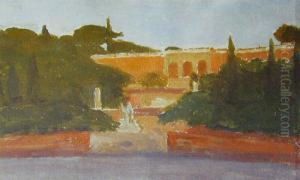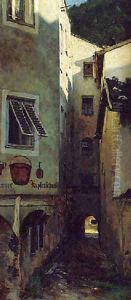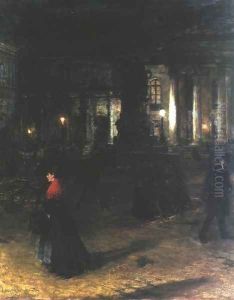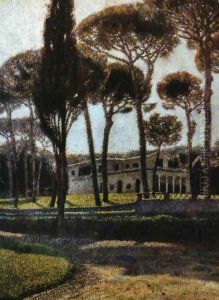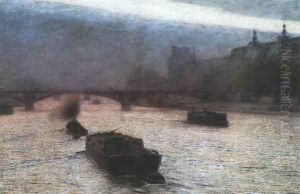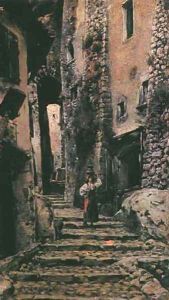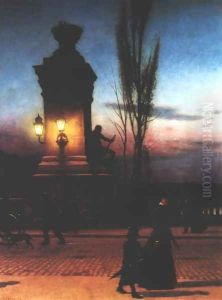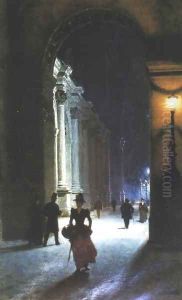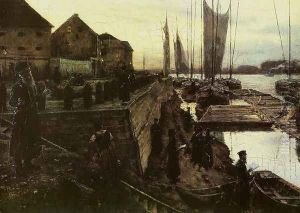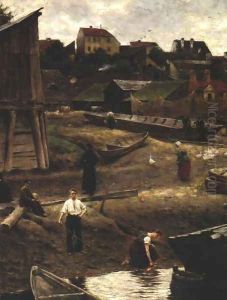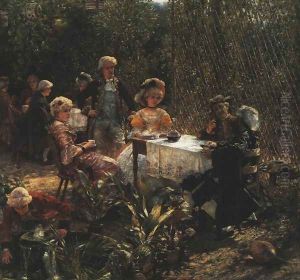Aleksander Gierymski Paintings
Aleksander Gierymski was a prominent Polish painter, born on January 30, 1850, in Warsaw, then part of the Russian Empire. He was known for his meticulous technique and attention to detail, which made him a leading figure in 19th-century Polish art. He belonged to the era of positivism in Poland, which followed the failed January Uprising of 1863 against the country's partitioning powers.
Gierymski's education in art began at the Warsaw Drawing Class, but he soon moved to Munich, where he attended the Academy of Fine Arts from 1868 to 1872. Munich was a vibrant artistic hub at the time, and he was influenced by the realist and naturalist movements that were popular in Europe. His early works were predominantly historical paintings, but his focus shifted to landscapes, genre scenes, and later on, to urban nightscapes and illuminations, which showcased his fascination with light and shadow.
In 1873, after his studies in Munich, Gierymski traveled to Italy, which proved to be a turning point in his artistic career. He was deeply inspired by the Italian landscape and light, and during his time in Rome, he started to develop his unique style characterized by realism and a luminous palette. His painting 'Iluminacja w parku' (Illumination in the Park) is a perfect example of his innovative approach to light in outdoor nocturnal scenes.
Gierymski returned to Warsaw in 1874 and became involved in the city's cultural life. However, his work was often misunderstood by the local art critics and the public, which led to periods of financial difficulty and personal disillusionment. Despite this, he continued to produce works that showed his commitment to realism and social awareness, including 'Jewish Woman Selling Oranges' and 'The Prayer of the Jews on the Day of Atonement', which depicted the lives of Warsaw's Jewish community with empathy and dignity.
In 1879, Gierymski moved to Munich again, and in the 1880s, his health began to deteriorate. He struggled with mental illness and spent his last years in isolation. Despite his personal struggles, he continued to work, and his later paintings are characterized by a more subdued and melancholic tone. Aleksander Gierymski died on March 6, 1901, in Rome, and his death marked the loss of one of Poland's most talented and innovative artists of the late 19th century.
Gierymski's legacy is significant in Polish art history. He was a pioneer in introducing modern painting techniques to Poland and his works are celebrated for their technical mastery and emotional depth. His dedication to capturing the nuances of light made him a forerunner of Impressionism in Poland, although he remained largely an individualist who defied easy categorization in art movements. His paintings are held in high esteem and can be found in various art galleries and museums in Poland and abroad.

